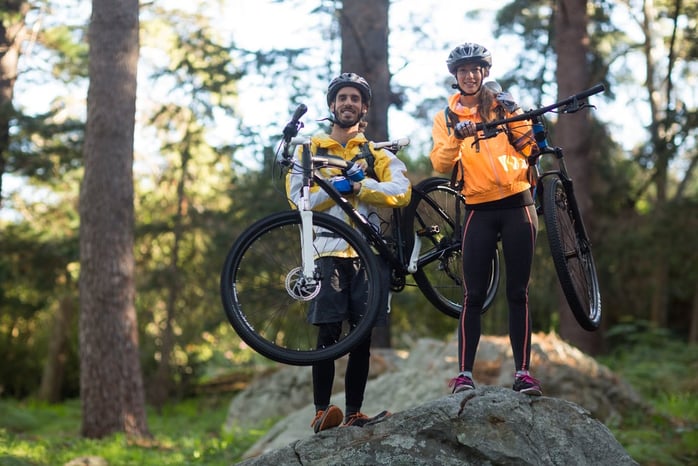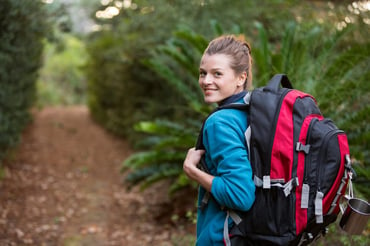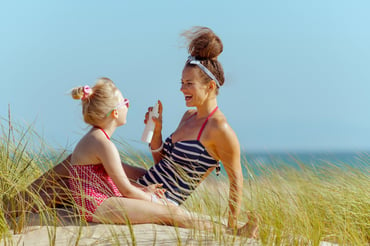
We Pacific Northwesterners love our sun. After a long wet winter, summer calls to us with all the beauty our great outdoors has to offer. since many of us are spending more time outside due to social distancing,
August is Summer Sun Safety Month and, it's a great time for a reminder on how to enjoy the sun and outdoors safely. The longer, sunny days of summer present the possibilities of beautiful, fun-filled days. Being outdoors is proven to improve our overall physical and mental health and we've known for years that we need sunlight to produce the vitamin D our bodies require. But we also know that overexposure to the sun may cause skin cancer, regardless of our natural skin tones.
What's in a sunny day?
To determine what you need to gear up for your sun-safe summer days, think about what you're going to be doing. Will you be swimming, biking, fishing, driving, hiking? What you'll be doing helps identify what you need to protect and how.
Your skin is your largest organ, and so skin cancers are more common than cancers of other organs. Apply and reapply sunblock regularly.
Besides sunblock, other ways to protect your skin on or near the water include UPF clothing and staying in the shade. Made from tightly woven and often bright colored fabrics, UPF clothing provides a sunblock that doesn't wear off. A UPF rating works like the SPF rating on sunblock. Generally, the higher the number, the greater sun protection it offers.
For more tips on reading a sunscreen label, visit our blog Skin Cancer Prevention Tips: How to Read a Sunscreen Label
Water-based activities
Protect your eyes and skin. Ever wonder why sunglass lenses are different colors? They may provide different protection by filtering out certain kinds of glare. If you're fishing, boating, or swimming, you'll want shades that protect your eyes from the reflection of the sun on the water.
When you're on a boat or beach, you may be able to create shade for yourself with awnings or umbrellas, but when you're on the go, UPF clothing may be the gear for you.
Remember that even if your sunscreen says it is water-resistant, you will need to reapply it every 90 minutes when you get wet. That includes wet with sweat!
Peak fun
Does your summer call for mountain top hiking? Remember that with the thinner air in the higher altitudes, there is less natural protection for your skin. The higher the elevation, the more UV rays hit the ground!
Even though it feels cooler on the peaks, you still need to protect yourself with clothing, sunblock, and shades. Don't forget your scalp, ears, and neck! Some skin cancers occur more frequently on the exposed areas.
A brimmed hat will help provide shade as you explore the higher altitudes.
Biking
The wind in your face feels good and helps cool your body temperature but the UV rays are still pounding down on you. Whether your two wheels are mounted on a bicycle, moped, or Harley, protect your arms, legs, face, and neck with sunscreen and appropriate clothing. Look for sunglasses that will protect against road glare.
Road trips in the car
While many cars today have tinted windows to help reduce UV exposure, long hours in the car may require more protection. Consider screens designed for car windows so the driver can see adequately and the passengers arms and legs are shaded. As with biking, wear eye protection to reduce road glare.
Related Read: How to Use the UV Index to Know When to Stay Inside
There is No Such Think as a Safe Tan
Continued exposure to the ultraviolet rays of the sun creates genetic damage in the cells within the skin and that damage can accumulate over the years. Those damaged cells can then grow and cause melanoma and other skin cancers. Everyone is at risk for skin cancer, including people with dark skin.
Any tan or burn is essentially genetic damage and parents should know that much of a person’s risk is actually garnered in the first 10 years of life. So it’s especially important to protect children from harmful UV rays.
However, the sun isn’t the only culprit. Tanning booths are a particularly unsafe tan. The FDA has actually classified them as carcinogenic to humans. That’s right, even one session in a tanning booth can increase your risk of melanoma.
Learn the signs and symptoms of melanoma and non-melanoma skin cancers.
A a little protection goes a long way in reducing your risks of developing skin cancer.
Summer Sun Safety Month is here.
Be prepared for those beautiful days to maintain your body's natural beauty and health! You can enjoy the physical and mental health benefits of being outdoors while also protecting your skin by
- Staying in the shade - use a shelter, such as a tree or umbrella, for its shade.
- Wearing protective clothing - long sleeves and UV rated clothing
- Wearing a broad-brim hat - using a hat can keep your head and neck shaded at all times.
- Use UV protective sunglasses - not only will UV rated sunglasses block the harmful rays, they also help to reduce your risks of developing cataracts.
- Applying sunblock of SPF 30 or greater - make sure you are using a thick layer of broad-spectrum sunscreen and reapply.
- Get car window shades or tinting
Remember, not all things are created equal. Check sunscreen for the SPF, clothing for the UPF, and sunglasses for proper UV and glare protection. Then be sure to perform regular self-examinations on yourself to be on the lookout for early signs of skin cancer!
Originally published July 2019. Revised July 2020.


